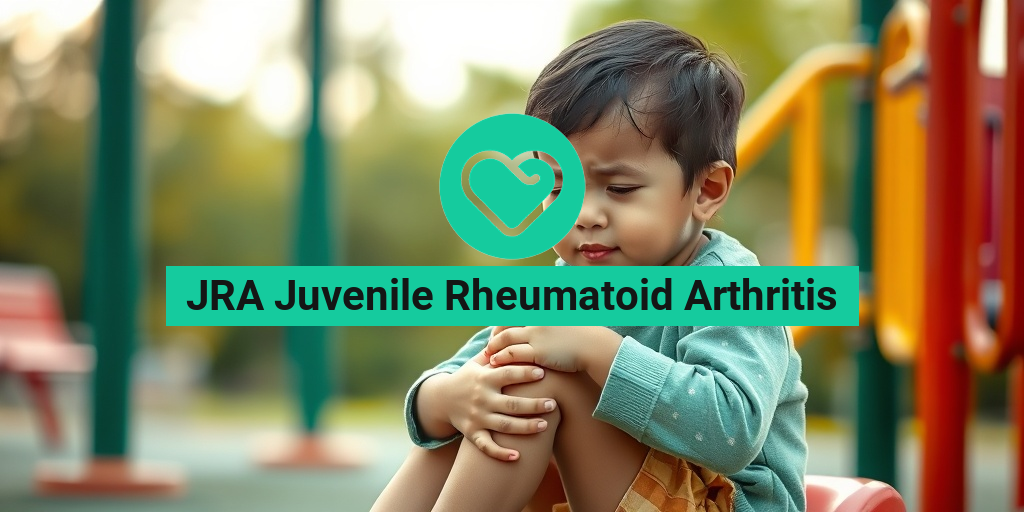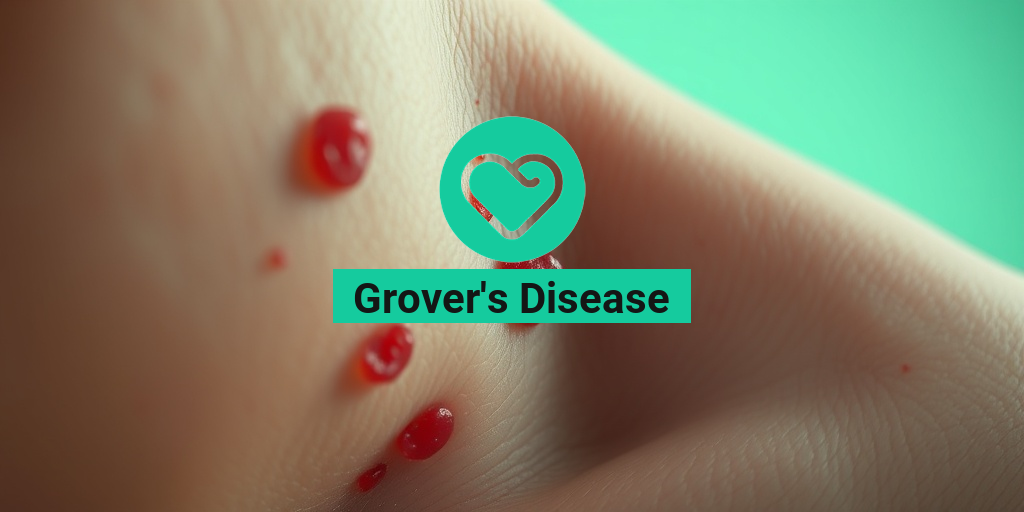What Is JRA?
Juvenile Rheumatoid Arthritis (JRA), also known as juvenile idiopathic arthritis (JIA), is a chronic inflammatory condition that affects children and adolescents. It is characterized by persistent joint inflammation, which can lead to pain, swelling, and stiffness. Unlike adult rheumatoid arthritis, JRA presents unique challenges and symptoms, making it essential for parents and caregivers to understand this condition.
JRA typically manifests before the age of 16 and can affect one or multiple joints. The exact cause of JRA remains unclear, but it is believed to involve a combination of genetic and environmental factors. The immune system mistakenly attacks the synovium—the lining of the joints—resulting in inflammation and damage.
Types of JRA
There are several types of JRA, each with distinct characteristics:
- Pauciarticular JRA: This type affects four or fewer joints and is the most common form. It often involves the knees and can lead to complications such as eye inflammation.
- Polyarticular JRA: Involves five or more joints and can affect both large and small joints. This type may resemble adult rheumatoid arthritis and can be more severe.
- Systemic JRA: This type affects the entire body, causing fever, rash, and inflammation in internal organs, in addition to joint pain.
Understanding the specific type of JRA is crucial for effective management and treatment. If you suspect your child may have JRA, consulting a healthcare professional is vital for accurate diagnosis and intervention.
JRA Symptoms
The symptoms of JRA can vary widely among individuals, making it essential for parents to be vigilant. Common symptoms include:
- Joint Pain and Swelling: The most prominent symptom, often affecting the knees, wrists, and ankles. Pain may worsen with activity and improve with rest.
- Stiffness: Particularly noticeable in the morning or after periods of inactivity, stiffness can limit mobility and flexibility.
- Fatigue: Children with JRA may experience increased tiredness due to chronic pain and inflammation.
- Fever: Some children may have intermittent fevers, especially in systemic JRA.
- Rash: A characteristic rash may appear in systemic JRA, often accompanied by fever.
How Do You Diagnose JRA?
Diagnosing JRA involves a comprehensive evaluation by a healthcare professional. This typically includes:
- Medical History: A detailed account of symptoms, family history, and any previous health issues.
- Physical Examination: A thorough examination of the joints to assess swelling, pain, and range of motion.
- Blood Tests: These tests can help identify inflammation markers and rule out other conditions.
- Imaging Tests: X-rays or MRIs may be used to evaluate joint damage and inflammation.
Early diagnosis is crucial for effective treatment and management of JRA. If you notice any symptoms in your child, it’s important to seek medical advice promptly.
Does Juvenile Rheumatoid Arthritis Go Away?
One of the most common questions parents have is whether JRA will go away. While some children may experience remission, where symptoms significantly decrease or disappear, others may continue to have symptoms into adulthood. The course of JRA can be unpredictable, and ongoing management is often necessary.
With appropriate treatment, including medications, physical therapy, and lifestyle modifications, many children with JRA can lead active, fulfilling lives. Regular follow-ups with healthcare providers are essential to monitor the condition and adjust treatment as needed.
For more information and resources on JRA and other health-related topics, consider visiting Yesil Health AI, where you can find evidence-based answers to your health questions.
Understanding JRA is the first step in managing this complex condition. By staying informed and proactive, parents can help their children navigate the challenges of juvenile rheumatoid arthritis with confidence. 🌟

JRA Causes
Juvenile Rheumatoid Arthritis (JRA) is a chronic inflammatory condition that primarily affects children and can lead to joint pain, swelling, and stiffness. Understanding the causes of JRA is crucial for early diagnosis and effective management. While the exact cause remains unclear, several factors are believed to contribute to the development of this condition.
Genetic Factors
Research indicates that genetics play a significant role in the onset of JRA. Children with a family history of autoimmune diseases are at a higher risk of developing this condition. Specific genes associated with immune system function may predispose individuals to JRA, making it essential for families with a history of autoimmune disorders to be vigilant.
Immune System Dysfunction
JRA is classified as an autoimmune disease, meaning the body’s immune system mistakenly attacks its own tissues. In the case of JRA, the immune system targets the synovium, the lining of the joints, leading to inflammation and pain. This dysfunction can be triggered by various environmental factors, including infections or exposure to certain viruses.
Environmental Triggers
While genetics and immune system issues are significant, environmental factors can also play a role in the development of JRA. Some potential triggers include:
- Infections: Certain viral infections may trigger the onset of JRA in genetically predisposed children.
- Environmental Toxins: Exposure to pollutants or chemicals may increase the risk of autoimmune responses.
- Dietary Factors: Some studies suggest that diet may influence inflammation levels, although more research is needed in this area.
Hormonal Influences
Hormones may also play a role in JRA, as the condition often presents during periods of hormonal changes, such as puberty. This suggests that hormonal fluctuations could potentially influence the immune response and the severity of symptoms.
JRA Risk Factors
Identifying the risk factors for JRA can help in early detection and intervention, which is vital for managing the disease effectively. Here are some key risk factors associated with Juvenile Rheumatoid Arthritis:
Age and Gender
JRA typically affects children under the age of 16, with the onset often occurring between the ages of 1 and 5. Interestingly, the condition is more common in girls than boys, which may indicate a hormonal or genetic predisposition.
Family History
A family history of autoimmune diseases significantly increases the likelihood of a child developing JRA. If a parent or sibling has been diagnosed with JRA or another autoimmune condition, the risk for the child is elevated.
Other Autoimmune Disorders
Children who have other autoimmune disorders, such as lupus or psoriasis, may also be at a higher risk for developing JRA. This suggests a shared genetic or environmental component that predisposes these children to multiple autoimmune conditions.
Ethnicity
Research indicates that certain ethnic groups may have a higher prevalence of JRA. For instance, children of European descent are more frequently diagnosed with JRA compared to those of African or Asian descent. Understanding these disparities can help in tailoring prevention and treatment strategies.
Previous Joint Injuries
Children who have experienced joint injuries or infections may be at an increased risk for developing JRA. These injuries can trigger inflammatory responses that may lead to the onset of the disease.
In conclusion, while the exact causes of JRA remain elusive, a combination of genetic, environmental, and hormonal factors contribute to its development. Recognizing the risk factors associated with JRA can empower parents and caregivers to seek early intervention, ultimately improving outcomes for affected children. 🌟

JRA Diagnosis
Diagnosing Juvenile Rheumatoid Arthritis (JRA) can be a complex process, as it often mimics other conditions and varies significantly from one child to another. Early diagnosis is crucial for effective management and to minimize long-term joint damage. Here’s a closer look at how healthcare professionals diagnose JRA.
Signs and Symptoms
The first step in diagnosing JRA involves recognizing the signs and symptoms. Common indicators include:
- Joint Pain and Swelling: Children may experience pain, swelling, and stiffness in their joints, particularly in the morning or after periods of inactivity.
- Fatigue: Chronic fatigue is often reported, which can affect a child’s daily activities and overall quality of life.
- Fever and Rash: Some children may develop a fever or a rash, particularly in cases of systemic JRA.
- Limited Range of Motion: Parents may notice that their child has difficulty moving certain joints.
Medical History and Physical Examination
A thorough medical history is essential. The doctor will ask about:
- Family history of autoimmune diseases
- Duration and pattern of symptoms
- Any previous illnesses or infections
During the physical examination, the doctor will assess the child’s joints for swelling, tenderness, and range of motion. This examination helps to rule out other potential causes of joint pain.
Diagnostic Tests
To confirm a diagnosis of JRA, several tests may be conducted:
- Blood Tests: These tests can check for inflammation markers, such as erythrocyte sedimentation rate (ESR) and C-reactive protein (CRP), as well as specific antibodies like rheumatoid factor (RF) and anti-citrullinated protein antibodies (ACPA).
- X-rays: Imaging tests can help identify joint damage or inflammation.
- Joint Aspiration: In some cases, a doctor may recommend aspirating fluid from a swollen joint to analyze it for signs of inflammation or infection.
It’s important to note that there is no single test that definitively diagnoses JRA. Instead, doctors rely on a combination of clinical evaluation and test results to make an accurate diagnosis.
JRA Treatment Options
Once diagnosed, managing Juvenile Rheumatoid Arthritis involves a comprehensive treatment plan tailored to the individual child’s needs. The primary goals are to reduce inflammation, relieve pain, and maintain joint function. Here are the main treatment options available:
Medications
Medications play a crucial role in managing JRA. Commonly prescribed options include:
- Nonsteroidal Anti-Inflammatory Drugs (NSAIDs): These are often the first line of treatment to reduce pain and inflammation. Examples include ibuprofen and naproxen.
- DMARDs (Disease-Modifying Antirheumatic Drugs): Medications like methotrexate can help slow disease progression and prevent joint damage.
- Biologics: For children with moderate to severe JRA, biologic agents such as etanercept or adalimumab may be prescribed to target specific pathways in the inflammatory process.
- Corticosteroids: In some cases, short-term use of corticosteroids may be necessary to control severe inflammation.
Physical and Occupational Therapy
Therapy is an essential component of JRA treatment. Physical therapy focuses on:
- Improving joint mobility
- Strengthening muscles around affected joints
- Enhancing overall physical function
Occupational therapy can help children learn how to perform daily activities with less pain and more ease, often through the use of adaptive tools.
Lifestyle Modifications
In addition to medical treatments, certain lifestyle changes can significantly improve a child’s quality of life:
- Regular Exercise: Engaging in low-impact activities like swimming or cycling can help maintain joint flexibility and strength.
- Healthy Diet: A balanced diet rich in anti-inflammatory foods, such as fruits, vegetables, and omega-3 fatty acids, can support overall health.
- Stress Management: Techniques such as mindfulness, yoga, or meditation can help children cope with the emotional aspects of living with a chronic condition.
Managing Juvenile Rheumatoid Arthritis requires a collaborative approach involving healthcare providers, families, and the children themselves. With the right treatment plan, many children with JRA can lead active, fulfilling lives. 🌟

JRA Living with the Condition
Living with Juvenile Rheumatoid Arthritis (JRA) can be a challenging journey for both children and their families. This autoimmune disorder primarily affects children, leading to inflammation in the joints and surrounding tissues. Understanding how to manage the condition is crucial for improving quality of life.
Understanding the Symptoms
JRA symptoms can vary significantly from one child to another. Common symptoms include:
- Joint pain and swelling: Often affecting the knees, wrists, and hands.
- Stiffness: Particularly noticeable in the morning or after periods of inactivity.
- Fatigue: Children may feel unusually tired or lethargic.
- Fever and rash: Some children may experience fever and a rash, especially during flare-ups.
Recognizing these symptoms early can lead to timely diagnosis and treatment, which is essential for managing JRA effectively.
Daily Management Strategies
Managing JRA involves a combination of medical treatment and lifestyle adjustments. Here are some strategies that can help:
- Medication: Anti-inflammatory medications, disease-modifying antirheumatic drugs (DMARDs), and biologics are commonly prescribed to control inflammation and pain.
- Physical therapy: Engaging in physical therapy can help maintain joint function and improve mobility.
- Regular exercise: Low-impact activities like swimming or cycling can strengthen muscles around the joints without putting too much strain on them.
- Healthy diet: A balanced diet rich in omega-3 fatty acids, antioxidants, and vitamins can support overall health and potentially reduce inflammation.
Emotional and Social Support
Living with JRA can take an emotional toll on children and their families. It’s important to address these aspects as well:
- Open communication: Encourage children to express their feelings about their condition. This can help them cope better.
- Support groups: Connecting with other families facing similar challenges can provide emotional support and practical advice.
- Counseling: Professional counseling can be beneficial for children struggling with the emotional impact of JRA.
JRA Support and Resources
Finding the right support and resources is vital for families dealing with Juvenile Rheumatoid Arthritis. Here are some valuable resources that can help:
Medical Resources
Consulting with healthcare professionals who specialize in pediatric rheumatology is crucial. They can provide tailored treatment plans and ongoing support. Some reputable organizations include:
- The Arthritis Foundation: Offers resources, support groups, and educational materials for families.
- National Institute of Arthritis and Musculoskeletal and Skin Diseases (NIAMS): Provides comprehensive information on JRA and ongoing research.
Online Communities
Online forums and social media groups can be excellent places for families to connect. These platforms allow parents to share experiences, tips, and emotional support. Some popular options include:
- Facebook Groups: Search for groups focused on JRA or juvenile arthritis to find a community of support.
- Reddit: Subreddits related to arthritis can provide a space for discussion and advice.
Educational Resources
Understanding JRA is key to managing it effectively. Here are some educational resources:
- Books: Look for books specifically about JRA that can help both children and parents understand the condition better.
- Webinars and Workshops: Many organizations offer online sessions that cover various aspects of living with JRA.
By utilizing these resources and support systems, families can navigate the complexities of Juvenile Rheumatoid Arthritis more effectively, ensuring that children lead fulfilling lives despite their diagnosis. 🌟

Frequently Asked Questions about Juvenile Rheumatoid Arthritis
What is Juvenile Rheumatoid Arthritis?
Juvenile Rheumatoid Arthritis (JRA) is a type of inflammatory arthritis that affects children. It is characterized by persistent joint pain, swelling, and stiffness. The condition can impact a child’s growth and development if not managed properly.
How do you diagnose Juvenile Rheumatoid Arthritis?
Diagnosing juvenile rheumatoid arthritis typically involves a combination of medical history, physical examinations, and laboratory tests. Doctors may look for signs of inflammation, joint swelling, and may order blood tests to check for specific markers associated with the condition.
How common is Juvenile Rheumatoid Arthritis?
Juvenile rheumatoid arthritis is relatively rare, affecting approximately 1 in 1,000 children. However, its prevalence can vary based on geographic location and other factors.
Does Juvenile Rheumatoid Arthritis go away?
While some children may experience remission and see their symptoms improve significantly, juvenile rheumatoid arthritis can persist into adulthood for others. Early diagnosis and treatment are crucial for managing symptoms and improving quality of life.
How do you get Juvenile Rheumatoid Arthritis?
The exact cause of juvenile rheumatoid arthritis is not fully understood. It is believed to involve a combination of genetic and environmental factors that trigger an autoimmune response, leading to inflammation in the joints.
What are the different types of Juvenile Rheumatoid Arthritis?
- Pauciarticular JRA: Affects four or fewer joints and is the most common form.
- Polyarticular JRA: Involves five or more joints and can be more severe.
- Systemic JRA: Affects the entire body and can cause fever and rash in addition to joint symptoms.
How does Juvenile Rheumatoid Arthritis differ from adult forms of arthritis?
Juvenile rheumatoid arthritis differs from adult forms primarily in its onset and progression. Children may experience different symptoms and responses to treatment compared to adults. Additionally, the long-term outlook can vary significantly between children and adults.
What treatments are available for Juvenile Rheumatoid Arthritis?
Treatment options for juvenile rheumatoid arthritis may include:
- Nonsteroidal anti-inflammatory drugs (NSAIDs)
- Corticosteroids
- DMARDs (Disease-Modifying Antirheumatic Drugs)
- Biologic agents
- Physical therapy
Can lifestyle changes help manage Juvenile Rheumatoid Arthritis?
Yes! Incorporating regular exercise, a balanced diet, and stress management techniques can help manage symptoms and improve overall well-being for children with juvenile rheumatoid arthritis.
Where can I find support for Juvenile Rheumatoid Arthritis?
Support groups, both online and in-person, can provide valuable resources and community for families dealing with juvenile rheumatoid arthritis. Organizations dedicated to arthritis research and support can also offer guidance and assistance.




